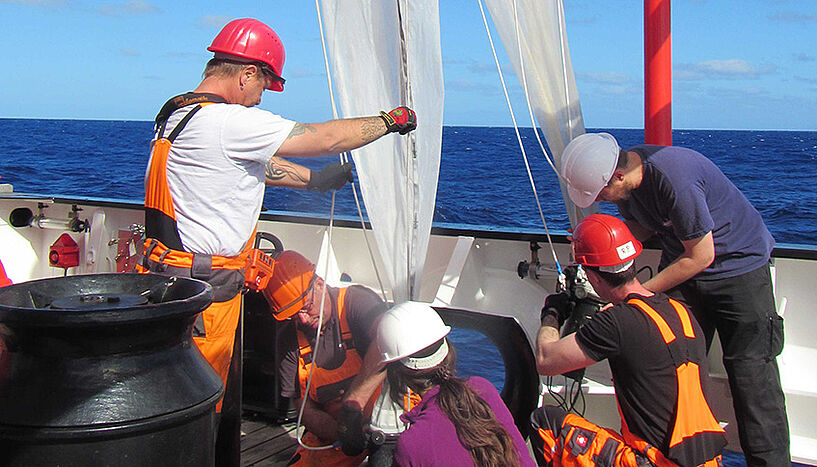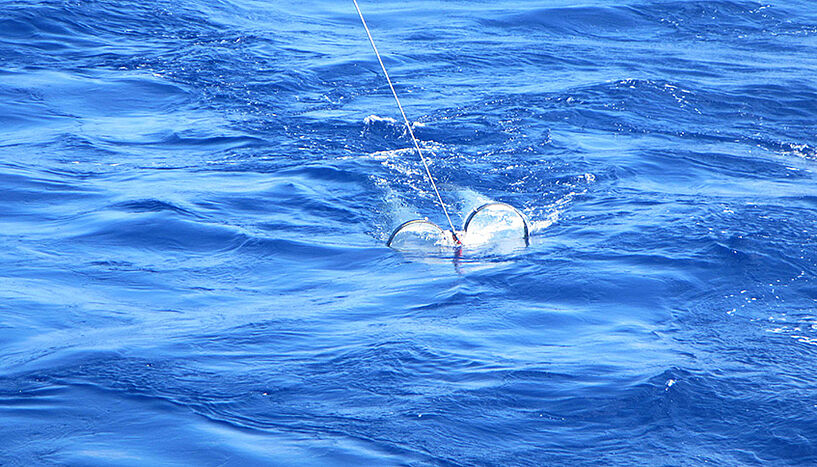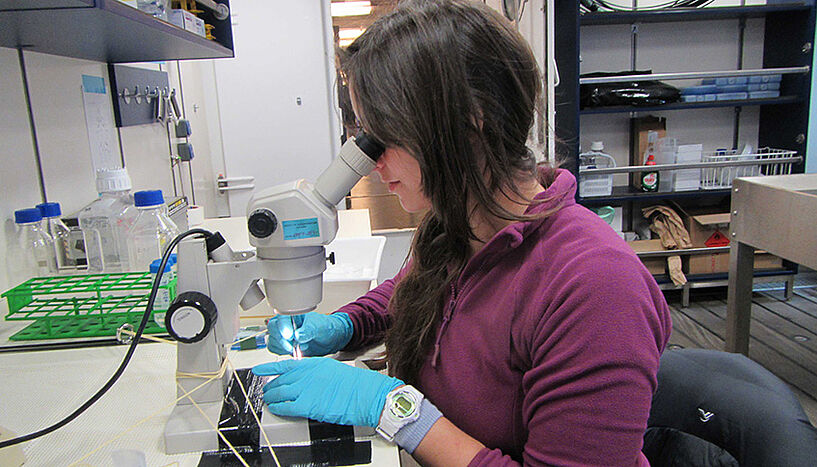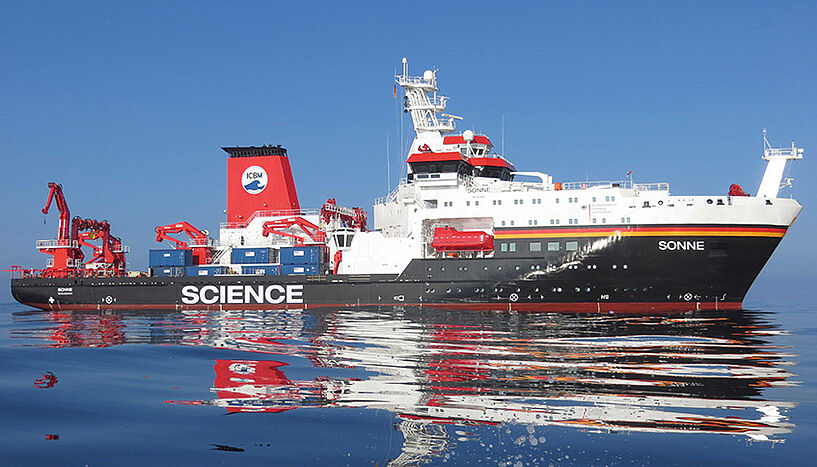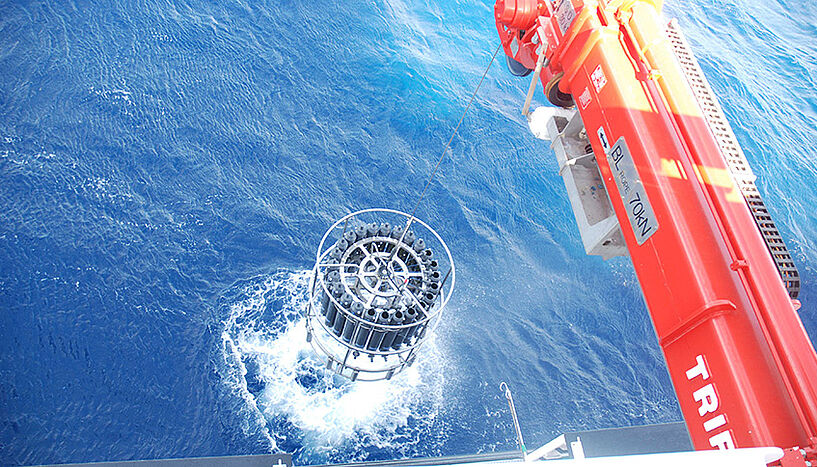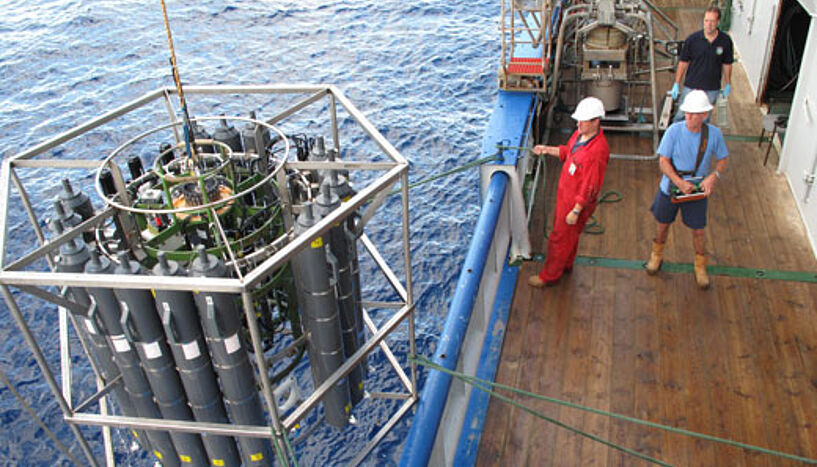Searching for ghost plastic
| 19. Mai 2016The crew of the University of Vienna has been on board the "Sonne" for over two weeks now. Soon it will cross the equator, going from the South Pacific into the North Pacific, where PhD student Maria Pinto is searching for and studying plastic particles in the ocean.
In the last decades plastic started to terrorize ecosystems. However, it also seems to be a new home for microorganisms that attach to the surface of this intruder. I am on board the "Sonne" to collect plastic from the South and North Pacific, to study the diversity of microorganisms at different locations and to understand more about their lifestyle. Until now, I have only sampled the South Pacific, but we will pass the equator soon and then I will be able to take a sample from the North Pacific.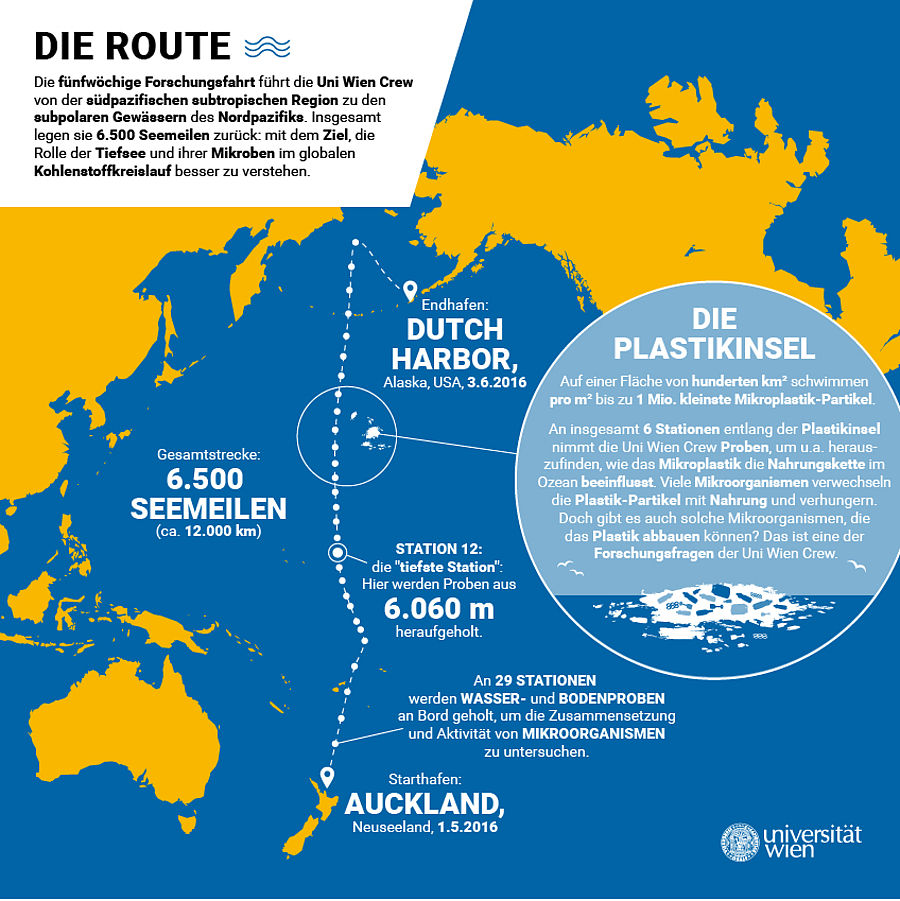
To collect plastic from surface waters I am using a special device called "Bongo Net". Basically, the Bongo Net consists of two nets kept open by circular metal frames. Somehow, it resembles the African drums that you might know from music. During our first trials in the Pacific the net was sinking all the time due to its weight. Thus, we had to attach floats to each side of Bongo to be able to skim the surface ocean. The carboys I used for this purpose did their job very well.
Plastic: an unnatural resource
Regarding plastic… well… so far it seems that plastic has not found its way to the South Pacific, which, of course, is also a positive thing from an environmental perspective. Nevertheless, my net has brought me some nice things – zooplankton, for example. Zooplankton are tiny animals in the ocean that serve as a food source for many larger marine organisms such as whales and fish. Zooplankton comprises many different species, of different colours, shapes and sizes, and the Bongo has been so kind to bring me a very beautiful, colourful and diverse sample of it.
Although it is much nicer to see colourful swimming life forms, I will continue searching for plastic pieces to find out what microscopic communities might thrive in this rather unnatural environment. We are approaching now a region in the northern North Pacific where we expect a lot of drifting plastic and the mystery of the so-called plastic islands originates from. So I am really curious what the next Bongo tows will bring.
The author:
To be continued ...
Downloads:
Universitaet_Infografik_Forschungsfahrt_Route_300dpi.pdf
Dateigröße: 1,16 MB

